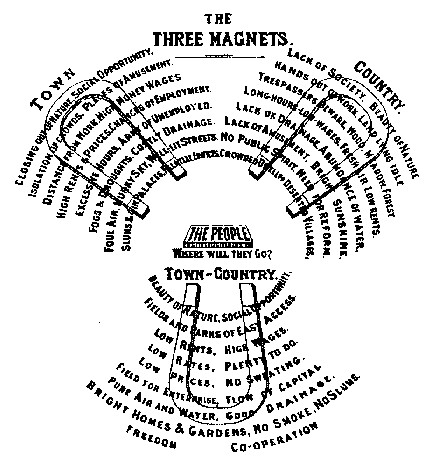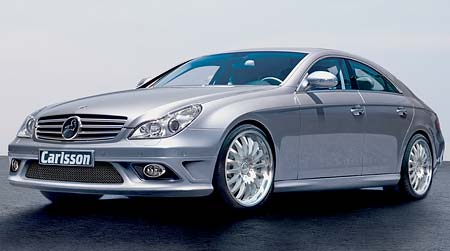
Note for those of you who have ordered a shirt: There has been a delay with the screen printing, so none of the new shirts will be sent out for at least a week or two. Thank you for your patience. Carry on.
First, make sure you check out Shoals and Ziller's psychoanalysis of the NBA in The Ziller Sessions: Edition 8.
Today’s guest lecture courtesy of Mark Pike, law student and author of “Green Building Red-Lighted by Homeowners’ Associations”, 33 Wm. & Mary Envtl. L. & Pol'y Rev. Vol. 3 (forthcoming Spring 2009). He is a DJ at WCWM 90.9FM and sometimes plays Free Darko’s “The Macrophenomenal Anthem” on his show.
During a recent Local Government Law class my brain started short-circuiting information I had just read on ESPN. I began fusing basketball recaps with the concepts of zoning, land use, architectural review boards, etc. It’s not too difficult to gently stretch the metaphor.
If the Sonics departure from Seattle was, more or less, a repudiation of the principles of publicly financed stadiums (cf. CLEAN v. State of Washington), is David Stern essentially concurring with Kennedy's opinion in Kelo, crafting the NBA's version of eminent domain for private benefit? Is the rise of guard-forward hybrid players, such as Kevin Durant, indicative of a larger movement which mirrors architecture's increasing acceptance of mixed-use facilities as an example of progressive efficiency? Could Brandon Jennings and Josh Childress' exodus to Europe be comparable to the "Offshoring Audacity" of "starchitects", lured to the desert of Dubai to pad their resume or just build their own empire? Is Gilbert Arenas, a geometric savant known for his unique expressions through populist mediums, ostensibly the athletic incarnation of Antoni Gaudí?

As I marinated on these thoughts, I decided to run it by Matthew Yglesias, a basketball fan who happens to frequently write about transportation and city planning issues. He responded with:
Surely there's something about building height and player height. Skyscrapers and big men. DC with its height limit is like Don Nelson's small ball lineups -- Andris Biedrins is the Washington Monument. Maybe that works?I would counter that Don Nelson strikes me more in the mold of a Western-libertarian reaction to restrictive contemporary city planning: if a player of any given height is best for utility, efficient breach theory suggests a Coach should insert them into the lineup instead of following the traditional G-SG-F-PF-C architecture that GM’s dictate by covenant and contract. Yglesias’s reference to Andris Biedrins as the Washington Monument is particularly insightful. Many citizens criticize the DC height-restriction as crippling to the city’s ability to obtain critical mass while artificially boosting rental prices due to limited space. The height-restriction is legislated proportionally to the width of the roads and not to the symbolic Obelisk, nevertheless resulting in both wide lanes and epic aerial vistas (i.e. dunks). Not surprisingly, a negative externality of this civic decision is that DC has some of the country’s heaviest traffic congestion.
Once again, if we superimpose this logic upon the discipline of basketball management, it counterintuitively suggests that teams spreading the lane with small ball lineups will end up having increased traffic in the paint, resulting in maximum points off of inside shots. Would you be surprised to learn that the Warriors lead the league in this statistic last year? Thanks, 82games.com! Daniel Burnham, father of the City Beautiful movement and architect of DC’s Union Station is famously quoted as saying: “Make no little plans. They have no magic to stir men's blood and probably will not themselves be realized.” As applied to athletics, focusing on statistics while ignoring the aesthetic is simply hemostatic.

As a discipline that focuses on human interaction with spatial and social elements, it is no surprise that the concepts of urban planning and architecture translate quite well to basketball. Accordingly, a few more brief attempts to synthesize these ideas might yield some interesting results and help us understand the continuing evolution of the League. But, first, we should familiarize ourselves with some historical context to better understand the juxtaposition.
In its infancy, basketball was actually a low-scoring (9-3!) game played in armories, smoke-filled halls, and barns. There were no 7-footers. Interestingly, the 3-point line was first introduced in a college game in 1945 in order to limit the effectiveness of taller players. The rule adjustments were voted on by the crowd at halftime. In general, the rules, though basic, were applied inconsistently from court-to-court, thereby discouraging interaction on a wide-scale basis. Basketball had not yet become civilized, but rather existed like isolated hamlets. Such inefficiency significantly thwarted the transcendent communal aspect of the sport, and caused an alarming number of injuries to players. Theodore Roosevelt was concerned about this and suggested the formulation of a governing body in 1910 to standardize the rules, thereby giving birth to the modern basketball era. The parallel developments of architecture and basketball in the early twentieth century, though somewhat non-euclidean, suggest that we could possibly anticipate future movements of the sport by analyzing the history of innovative building schemes.
Le Corbusier, a founding father of the modern architecture and urban planning movement, actually enjoyed playing weekly games of basketball as early as the 1920s, suggesting that the game had begun to go global. When he planned cities, he envisioned towers. He once proposed razing much of Paris and replacing it with 18 sixty-story buildings. He disliked congestion and preferred hyper-focused, specialized, regimented zones. Le Corbusier would have drafted Shawn Bradley.

Ebenezer Howard had a vision at the beginning of the 20th century for “Garden Cities”, which essentially lead to the conceptualization of suburban society. (As an aside, Howard enjoyed giving speeches in Esperanto, an invented universal language—which seems extremely Free Darko. Although, that might kind of be like if Phil Jackson insisted that the Lakers played FIBA-rules basketball just because). Howard illustrated his idea in a famous diagram titled “Three Magnets.” These “Town-Country” cities would combine the benefits of Town (opportunity, crowds, amusement, wages) and Country (beauty, fresh air, low rent, lack of society). Similarly, the NBA features a triangular tension between purists, innovators, and hybrid strategies. I would venture that the attributes of both Town and Country translate fairly well when describing basketball.
An imprecise proximation of the embodiment of Town, Country, and Town-Country for those subscribing to the Free Darko ethos might be transliterated a bit like the following:
TOWN: Kevin Garnett, New York Knicks, Vince Carter, Los Angeles Lakers, Baron Davis, Allen Iverson
COUNTRY: Kevin Durant, Memphis Grizzlies, Tyrus Thomas, Portland Trailblazers, Gerald Green
TOWN-COUNTRY: Amare Stoudemire, Chris Paul, Phoenix '04-'05, Josh Smith, Gerald Wallace, Dwight Howard

At the very basic level, both basketball and city planning are typically governed by rules— limitations agreed upon by lawmakers. Some rules are functionally utilitarian (e.g. green lines and 3-point arc placement, the 3-second rule and rent-control, the hand-check rule and city bonds), while the excessive arbitrariness of other rules can frustrate and undermine the very purpose of the establishment (e.g. the NBA dress code and Post-Giuliani Times Square). Nostalgia persists throughout many circles of NBA fans, a zeitgeist for consistent and stylized triple-digit scoring. A livable city. A productive society.
Progress has been made. The previously mentioned 3-second rule and the hand-check rule have been tremendous innovations for the League and enabled not just a transformative style of play, but statistical efficiency as well, thereby pleasing traditionalists and basketball modernists. In an extremely informative 2007 interview with Stu Jackson, Executive Vice President of Basketball Operations for the NBA, he explained precisely how such rule realignments calibrate the entire system:
Because our rules are more focused on keeping the middle open and offering more opportunities for players to cut and penetrate the basketball in the middle of the floor, the quality of our perimeter shots has gone up and we’re also getting more higher-percentage shots inside.Field Goal Percentage increased steadily from 2003-2007, and we assume there was a direct correlation to these executive planning decisions. The logical extension of this analysis into the realm of urban planning and governance would be to consider rule changes like fuel-efficiency standards, building code regulations, tax breaks for developments achieving LEED standards, etc. In an artificial market, being an early adopter to such progressive innovation before government dictates your competitors to comply significantly decreases your overall potential for success; however, if you can foresee sudden shifts in the market, you sometimes stand to win as a first-mover. I would contend that teams like the Memphis Grizzlies and the Atlanta Hawks that have focused on an untraditional and potentially cost-effective approach of versatile and athletic players could benefit greatly if their vision of the League materializes; otherwise, pictures of their rosters could appear on paleofuture.com.
 (photo: Jill Allyn Stafford)
(photo: Jill Allyn Stafford)It doesn’t take a social scientist to figure out that the way in which Howard’s vision was applied in reality was extremely flawed. Le Corbusier’s “modern” architectural work, in retrospect, has been criticized as isolating and monolithic. New urbanism is on the rise, and coaches will continue to experiment with lineups to achieve pareto optimal results. This is not the death of the big man, nor is it the birth of a new guard.
This is athletics as architecture. Sport as city.















No comments:
Post a Comment